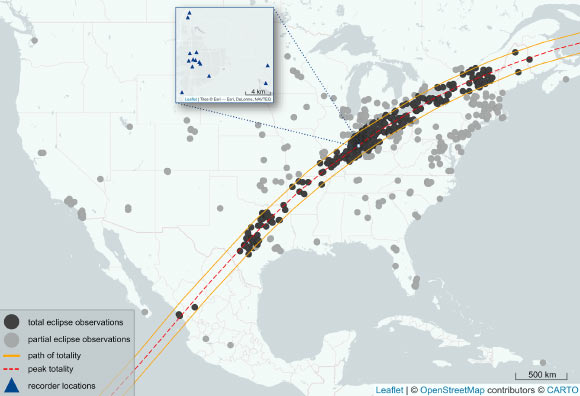Although the euro area has a single currency and a common monetary policy, lending practices differ across euro area countries in several ways that shape the pass-through of monetary policy. In a recent paper (Vilerts et al. 2025), we study a less-explored difference: the maturity of the relevant overnight interest rate swap (OIS) at the time of issuance of new loans. We use data from AnaCredit, a comprehensive euro area-wide loan-level database, covering about seven million new loans issued by banks to non-financial corporations (NFCs) in 2022-23.
This timeframe encompasses the series of post-pandemic rate hikes.
Our preliminary analysis reveals that structural factors, such as loan type, firm size, or loan maturity, explain only a small portion of the lending rate differences across euro area countries. This suggests that other loan characteristics may play a more significant role.
In our study, we break the interest rate on individual loans down into a ‘relevant risk-free rate’ and a ‘premium’ – the residual compensating banks for risk. The relevant risk-free rate is that of the OIS. For fixed-rate loans the maturity of the relevant OIS is equal to the maturity of the loan, while for floating-rate loans it is the maturity corresponding to the loan’s reference rate at origination.
For example, the relevant risk-free rate for a five-year fixed-rate loan is the five-year OIS rate on the issuance date. In contrast, for a five-year floating-rate loan benchmarked against a three-month EURIBOR and adjusted every three months, the relevant risk-free rate would be the three-month OIS rate. The premium is then calculated as the difference between the lending rate and the relevant risk-free rate.
We find striking cross-country variation (Figure 1) in the maturity of the relevant risk-free rates: in countries such as Latvia and Ireland, maturities are very short – around six months on average. Meanwhile, in other countries, such as the Netherlands, Malta, and France, they often exceed five years on average.
Figure 1 Cross-country heterogeneity in the maturity of the relevant risk-free rate (years)
Source: Vilerts et al. (2025).
Note: The figure shows the weighted average maturity of the relevant risk-free rate for the newly issued loans of non-financial corporations in euro area countries, 2022-23.
Loan characteristics key for pass-through
These structural differences mean that monetary policy transmits with varying strength and speed across the euro area, depending on which segment of the risk-free yield curve dominates local lending. Two key questions emerge. First, to what extent can the cross-country variation in the rise of average interest rates on new loans between early 2022 and late 2023 be explained by differences in the evolution of the risk-free rates used to price loans to non-financial corporations? And second, how does the maturity of the relevant risk-free rate affect the pass-through of monetary policy rate changes to interest rates on new loans?
‘Before and after’ analysis of lending rates
To address the first question, we employ a time-difference approach to analysing changes in interest rate levels. In particular, we compare interest rates – as well as adjustments in the relevant risk-free rates and shifts in the premium – on loans issued in two periods bracketing the 2022-23 tightening cycle.
They are the first quarter of 2022, before the first hike in July 2022, and the fourth quarter of 2023, after the final hike in September 2023. We find that most of the rise in interest rates on new loans during the post-pandemic tightening was driven by increases in the relevant risk-free rate (Figure 2).
Figure 2 ‘Before and after’ analysis of lending rates
(conditional change between the first quarter of 2022 and the last quarter of 2023, percentage points)
Source: Vilerts et al. (2025).
Notes: The figure shows conditional changes in lending rates (from the first quarter of 2022 to the fourth quarter of 2023) with 95% confidence bands, breaking them down into the contributions from relevant risk-free rates and the premium.
Three key observations emerge from the analysis. First, the pass-through of changes in the relevant risk-free rates to changes in lending rates exhibits notable cross-country variation. Some 11 countries experienced an increase in relevant risk-free rates exceeding four percentage points, with Latvia and Estonia experiencing the highest increases at 4.37-4.41 percentage points. In contrast, the Netherlands and Malta saw risk-free rates rise by only 2.85 percentage points. Second, the distinction between fixed and floating-rate loans does not always provide a clear explanation for the observed patterns. For the relevant risk-free rates, the change was particularly pronounced in countries like Latvia and Ireland, where floating-rate loans with short fixation periods are more prevalent. Similarly, a strong contribution of relevant risk-free rates was observed in Italy, despite its higher reliance on fixed-rate loans, which tend to have shorter maturities. Third, a large increase in the relevant risk-free rates does not necessarily result in the largest increase in lending rates. In several countries, the rise in relevant risk-free rates was offset by a decline in the premium, which moderated the overall increase in lending rates.
Pass-through of monetary policy rates to lending rates
We then turn our attention to loans issued near ECB Governing Council meetings and use a stacked time-difference regression (following Bredl 2024)
instead of a simple before-and-after comparison. Specifically, we examine how the pass-through of monetary policy rate changes varies across loans priced off different maturities of relevant risk-free rates, now using the full set of actual changes in the policy rate, instrumented by high-frequency surprises (Altavilla et al. 2019). As shown in Figure 3, the pass-through from monetary policy rates to lending rates strengthens as the maturity of the relevant risk-free rates shortens.
However, applying this approach to the components of interest rates shows that this mechanical pass-through is not the only factor at play, as we see adjustments in premia smoothing differences in pass-through across loan categories. We find that premia increased less for loans linked to shorter maturity risk-free rates, which partially offsets the differences in the aggregate pass-through to lending rates.
Figure 3 Stronger pass-through at shorter maturities
Source: Vilerts et al. (2025).
Notes: The figure shows the effect of a one percentage point increase in the deposit facility rate on lending rates for loans issued within the six weeks before or the 7-12 weeks after an ECB Governing Council meeting relative to loans for which the relevant risk-free rates have maturities over five years.
There are several possible explanations for this pattern. On the lender side, repricing of loans can at times outpace the pass-through to funding costs, improving net interest income, and creating scope to lower premia on new loans – especially for those priced off short-term reference rates. On the borrower side, tighter policy can alter the composition of lending and firms may substitute borrowing across maturities and rate types. Overall, the evidence points to systematic smoothing effects: premia adjustments dampen differences in loan rate changes. This suggests that the variation reflects pricing within banks rather than shifts in the banks doing the lending.
Loan pricing design matters for monetary policy
Our results point to several important implications for monetary policy. First, loan pricing design matters for monetary policy transmission. Markets where lending is tied to shorter maturities exhibit stronger and faster transmission. Second, loan premia also adjust independently of exogenous factors. When short-term rates move sharply, banks reprice loan premia over the relevant risk-free rate in ways that smooth differences across loans priced off different maturities. Recognising this interaction helps explain cross-country differences during tightening episodes and anticipate how the composition and pricing of new credit respond to policy.
Authors’ note: This column first appeared as a Research Bulletin of the European Central Bank. The authors gratefully acknowledge the comments from Alexander Popov and Zoë Sprokel. The views expressed here are those of the authors and do not necessarily represent the views of the European Central Bank, the Eurosystem, or the International Monetary Fund.
References
Altavilla, C, L Brugnolini, R S Gürkaynak, R Motto and G Ragusa (2019), “Measuring euro area monetary policy”, Journal of Monetary Economics 108(C): 162-179.
Bredl, S (2024), “Regional loan market structure, bank lending rates and monetary transmission”, Working Paper.
Vilerts, K, S Anyfantaki, K Beņkovskis, S Bredl, M Giovannini, F M Horky, V Kunzmann, T Lalinsky, A Lampousis, E Lukmanova, F Petroulakis and K Zutis (2025), “Details Matter: Loan Pricing and Transmission of Monetary Policy in the Euro Area”, ECB Working Paper 3078.






